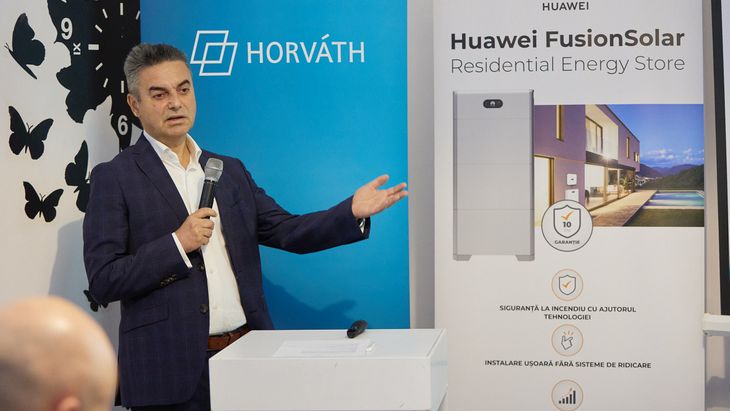Hydrogen is one of the most promising long-term energy storage technologies, and Romania has a better chance than other European countries to develop this technology because it has all the energy sources that can produce “clean hydrogen”.
“In the short term, hydrogen must become competitive with the solutions it replaces from the perspective of production, transport and distribution costs. It is essential for Romania to catch this train because, unfortunately, from all European statistics, we are fighting for the last and penultimate place for what innovation means, and I’m not just talking about fundamental innovation, I’m talking about all types of innovation”, said Cătălin Stancu, Associated Senior Expert at Horváth consulting firm, at the conference “Hydrogen Project – what we have in Romania”, organized by Energynomics.
According to Stancu, Romania ranks last in the EU from the perspective of the research and innovation index.
“That index is 35, whereas 100 is the average of a country that has a decent organization for technological development and innovation. Entering at least some areas of innovation in the field of hydrogen would give Romania the chance to enter the logic of technological innovation and competitiveness”, Stancu added.
To produce hydrogen at acceptable costs, electrolysis units should operate at least 4,500-5,000 hours, which equates to a capacity factor of 55%. For now, Romania does not have enough green energy to power the electrolysis units.
In the field of hydrogen, Romania’s potential is focused on the sectors with the greatest impact on reducing the CO2 footprint, such as industry and transport.
At the same time, Romania benefits from the potential to produce clean hydrogen using the entire range of resources and local availability. According to the data provided by Horváth, Romania’s hydrogen demand for 2030 was estimated in the range of 237-396 thousand tons. The use of such a quantity of hydrogen would reduce the level of CO2 emissions by 3-5 million tons.
Several regions in the country can become hydrogen ecosystems (H2 Valleys) given the industrial users and local resource potential. “Hydrogen Valley” is a precisely defined geographical area where hydrogen serves more than one sector or end application in mobility, industry and energy.
DWLOAND THE PRESENTATION OF CĂTĂLIN STANCU
The five identified areas with the basic conditions to support the development of hydrogen ecosystems are Bucharest-Ploiești-Târgoviște-Pitești, Constanța-Medgidia-Călărași-Slobozia, Cluj-Târgu Mureș-Sighișoara-Sibiu-Sebeș, Galați-Brăila-Tulcea and Craiova -Slatina-Târgu Jiu.
“It is ideal to have the energy resources at the location to produce cheaply”, Stancu emphasized.
The conference “Hydrogen Project – what we have in Romania” was organized by Energynomics with the support of our partners Aplind, Delgaz Grid, Horváth, Photomate and Transgaz.
